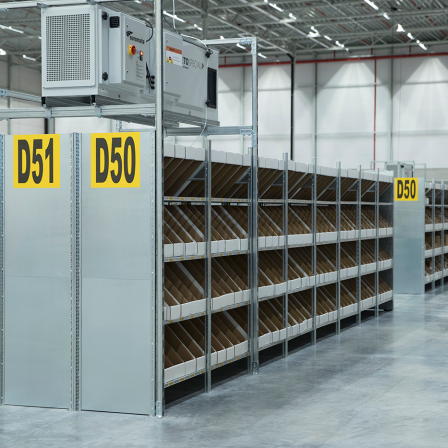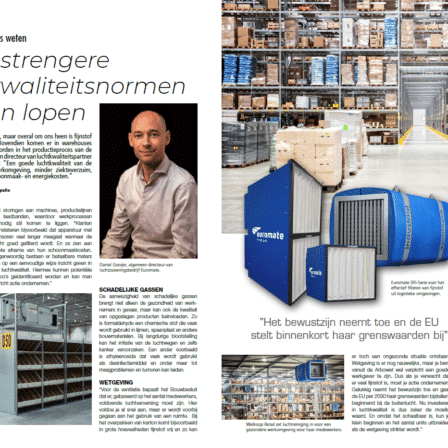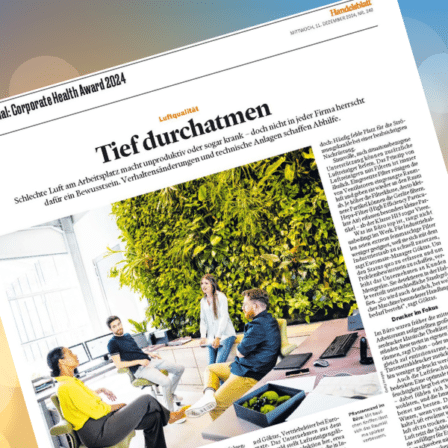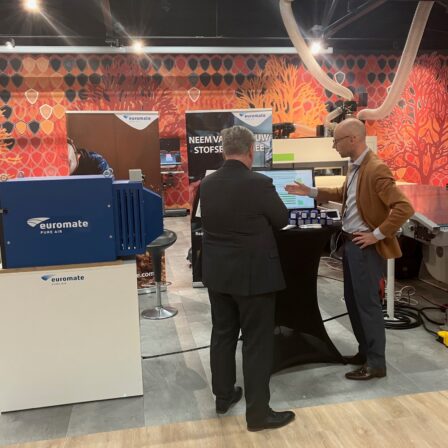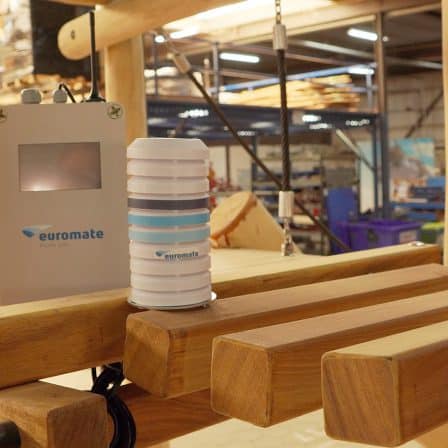Are you dealing with EtO in your organisation?
Together with a network of independent experts, we help companies move step by step towards a safer and healthier working environment.
Ethylene oxide in logistics: risks, legislation and solutions
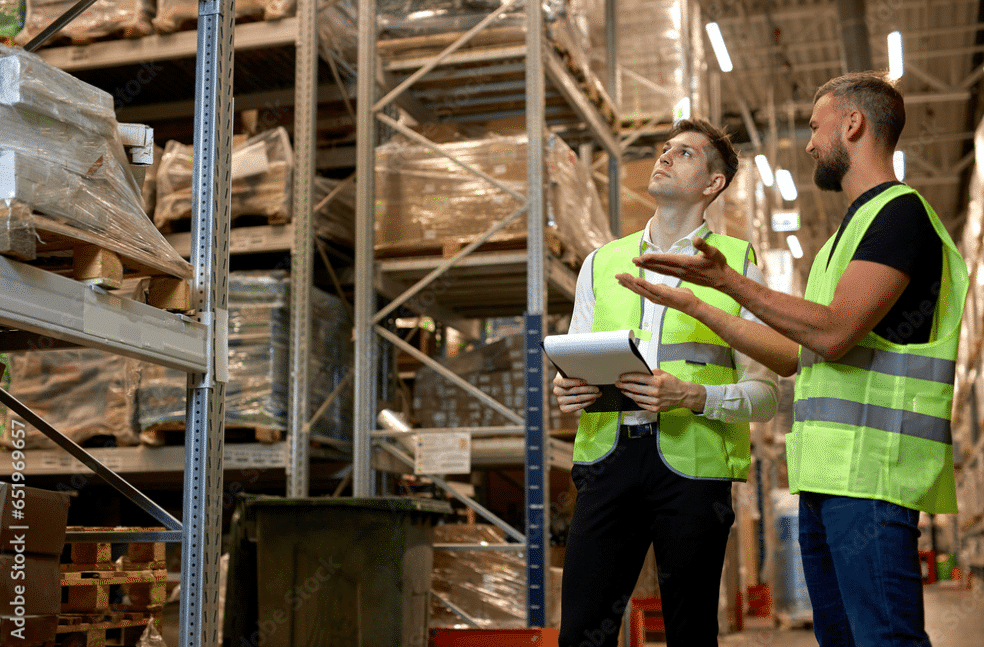
Ethylene oxide (EtO) has been used for decades for sterilising medical devices and fumigating goods. Recently, it has been recognised that EtO can remain present in the logistics chain far longer than previously assumed, with potentially serious consequences for both employees and organisations.
During the Ethylene Oxide Knowledge Session 2025 on Wednesday 19 November, Euromate, RPS and external experts shared the most up-to-date insights on health effects, legislation and practical control measures. This article summarises the key findings and offers guidance for companies that take responsibility for creating a safe working environment.
1. EtO: an invisible but persistent hazard

Sophia Franklin Photo: Jeroen Wolbers
EtO is classified as a CMR substance: carcinogenic, mutagenic and reprotoxic. It penetrates deeply into materials, degrades poorly in air and can cause DNA damage at extremely low levels. As occupational physician Sophia Franklin explained:
“There is no safe exposure limit for EtO.”
EtO can be absorbed through inhalation and, to a lesser extent, through the skin. The substance rapidly distributes throughout the body and forms adducts with haemoglobin and DNA. Chronic exposure, even at low levels, can lead to respiratory symptoms, neurological issues, reproductive harm and cancer.
2. Newly recognised insight: months of off-gassing in warehouses

Huib Lebbing. Photo: Jeroen Wolbers
One of the biggest eye-openers of the session came from lawyer Huib Lebbing: EtO can continue to evaporate from stored products for extended periods due to a chemical reaction that was previously insufficiently recognised.
“In some cases, EtO can still escape from pallets months after sterilisation.”
This means warehouse workers, transport staff and logistics partners may have been unknowingly exposed for prolonged periods. Dutch regulators have confirmed that this risk was previously under-acknowledged.
3. Legal reality: employers and supply chain partners share responsibility
Chain responsibility was central in Huib Lebbing’s contribution. His message was clear:
- Contracts do not automatically protect organisations from liability
- Dutch law requires employers to control all known and reasonably foreseeable risks
- The Labour Inspectorate and the Public Prosecution Service are becoming increasingly strict: administrative, civil and criminal enforcement are all possible
- managers and directors can even be held personally criminally liable in cases of negligence
Lebbing summarised it in one memorable phrase:
“Be good and show it.”
dr. Erik van Deurssen. Photo: Jeroen Wolbers
In other words: implement measures and demonstrate that everything reasonably possible has been done.
4. Monitoring is mandatory, but not every measurement counts
Occupational hygienist Erik van Deurssen emphasised that many companies assume they are safe because they use a gas monitor or carry out a container spot measurement.
The reality:
- Many tests do not detect low but relevant concentrations
- Gas monitors do not provide time-weighted averages
- Container spot measurements say nothing about employee exposure
- Continuous monitoring shows peaks but is insufficient for legal compliance
For compliance with Dutch legislation, standard NEN-EN 689 is leading. This standard requires:
- Measurements per similar exposure group (SEG)
- At least three measurements below 10% of the limit value
- Active personal sampling (the “gold standard”)
- Reassessment when processes or control measures change
“Measurement is mandatory, and only the right measurement counts.” dr. Erik van Deurssen
5. Practical control measures: from pallet choice to air cleaning
The session showed that many practical steps can be taken to reduce EtO.
The STOP strategy provides the foundation:
Substitution
- Use alternatives to EtO where possible, such as radiation or heat-based sterilisation
Technical measures
- Improve ventilation or create dedicated ventilation zones
- Use local exhaust ventilation when opening or unloading goods
- Use activated carbon filters or chemical neutralisation
- Sector-specific solution: Euromate Kinetic-425 technology for EtO reduction
- Simple adjustments:
- Replace wooden pallets with plastic alternatives
- Use perforated or breathable wrapping film
- Avoid storage methods that allow gas accumulation
Organisational measures
- Implement structured procedures for receiving sterilised or fumigated goods
- Train employees to recognise, report and act appropriately
- Introduce job rotation or limit time spent in affected areas
Personal protective equipment (PPE)
- Only as a temporary solution or in emergencies
- Never as the final or sole control measure
6. Joint conclusion: work together across the chain
The experts emphasised that EtO is not only a health issue but also:
- A legal risk
- A reputational risk
- A compliance challenge
- A shared responsibility across the entire supply chain
Without collaboration between manufacturers, sterilisation companies, logistics partners and warehouse operators, risks will persist.
7. Next steps for organisations
- Conduct a retrospective risk assessment
- Carry out SEG measurements in accordance with NEN-EN 689
- Install continuous monitoring in warehouses
- Investigate technical air purification solutions
- Document every step: for inspectors, employees and insurers
- Train staff and embed procedures within the organisation
- Collaborate with supply chain partners, knowledge sharing prevents incidents
Conclusion
The knowledge session made one thing clear: the time for assumptions is over. EtO demands insight, responsibility and cooperation. Euromate continues to support organisations with knowledge, advice and advanced air purification technology to help create a healthy, safe and future-proof working environment.

